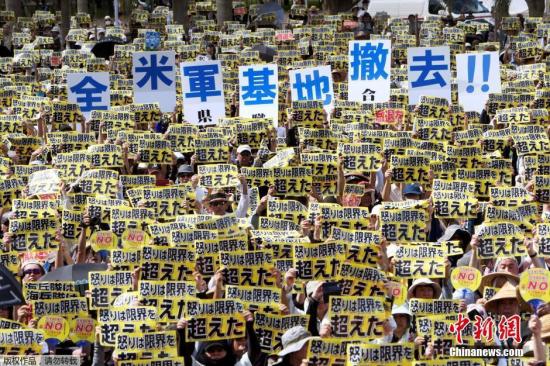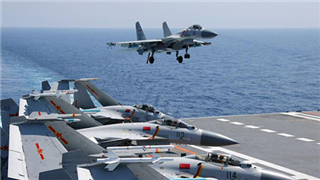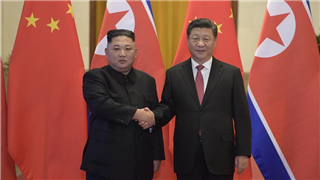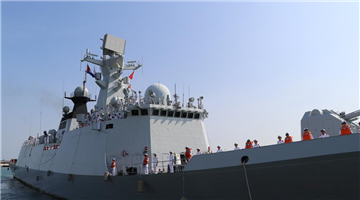
According to a report by Japan’s Kyodo News Agency, recently, Japan's land reclamation activities for new U.S. military base off the Henoko has triggered repeated protests from the public. On January 7, over 30 Japanese-Americans staged a rally against the reclamation in front of the White House. The organizer of the rally, Robert Kajiwara, started an online petition on a section of the White House website for stopping the landfill project, and collected 195,000 signatures by January 7.
“The protest and petition campaign launched by the Japanese public is unprecedented both in intensity and scale,” said Zhou Yongsheng, deputy director of the Japan Research Center of the Institute of International Relations at China Foreign Affairs University, when interviewed by the newspaper. “It was expanded to the White House, and also exerted international influence via the internet, imposing pressure on the Japanese government and the U.S. government.”
The protest campaign is centered on the relocation of the U.S. Marine Corps Air Station (MCAS) Futenma. Located in the southern prefectural city of Ginowan, it is the largest U.S. military base and helicopter airfield in the Okinawa Prefecture.
According to Zhou, the Japanese and U.S. governments agreed in 1996 to relocate the U.S. Marine Corps Air Station (MCAS) Futenma from the populous Ginowan City to the Henoko district in the northern Okinawa Prefecture city of Nago. However, such haunting problems as crimes by U.S. military personnel, aircraft crashes, falling object hazards, noise and other pollution have become intolerant for local residents, who repeatedly asked to shut down the military base and relocate it out of the prefecture.
On December 14, 2018, the central government of Japan enforced the landfill project in Henoko despite local opposition. Okinawa Governor Denny Tamaki denounced the central government’s unilateral decision “violates the law,” saying that “the dumping of dirt and sand into the sea is against the will of Okinawans” and that he “was very angry at this move.”
Tied Up with the Ally for Interests
So, why does the Japanese government insist on building the Futenma base in the island prefecture of Okinawa?
“The Japan-U.S. alliance is the essential part of Japan’s diplomatic policy after World War II, and the Japan-U.S. Security Treaty is the foundation of the relations between the two countries,” Lv Yaodong, director of the Department of Japanese Diplomacy at the Institute of Japan Studies under the Chinese Academy of Social Sciences, told the newspaper. He said that in accordance with the Japan-U.S. Security Treaty, the U.S. is entitled to set up military bases at any place within the administrative jurisdiction of Japan. The U.S. military in Japan is an issue left over by history. The central government of Japan holds that the Japan-U.S. military alliance must be solidified considering the important role of the U.S. forces in Japan in defending homeland security of Japan, under the pretext of the Korean nuclear issue and the so-called “China threat.”
“Okinawa is a place of strategic importance, so the U.S. forces don’t want to leave,” remarked Zhou. “Defending the security of Japan is only a pretext.” Since the early 1950s, the U.S. has joined hands with its Asia-Pacific allies to form the first and second island chains in an attempt to seal off China. Okinawa is part of the first island chain. Initially, the first island chain was formed to prevent the expansion of communist forces, and after the collapse of the Soviet Union, the U.S. has still retained a large amount of garrison troops in Okinawa, with the core purpose of maintaining frontier deployment and deterrence targeting China and the Korean Peninsula.
The U.S. army is reluctant to retreat from Okinawa and meanwhile, the central government of Japan also wants it to stay. The two sides then hit it off. Apart from the landfill work for the construction of the new U.S. military base in Okinawa, the Japanese government paid a huge price to urge the U.S. forces to stay.
Kyodo News Agency reported that Japan’s defense ministry planned to purchase Mage Island in southwestern Japan at a price of about 16 billion yen (approx. RMB 1 billion) and build it into a shared base for the Japan Self-defense Forces and the U.S. army in Japan, where U.S. carrier-borne aircraft will be able to conduct land-based simulated training.
According to the Yomiuri Shimbun, Japan’s Defense Ministry and the enterprise that owns Mage Island had reached consensus on the purchase price, and planned to sign an official purchase contract prior to April 2019. It is reported that Japan’s Defense Ministry listed a 600 million yen environmental investigation expenditure in its 2019 budget as the preparation for building a training field on Mage Island.
“Japan has its own interests succumbing to the U.S. strategic deployment in East Asia,” said Zhou. Indeed, the Japanese government didn’t spend huge amounts on the U.S. forces in Japan for nothing.
“The current Japan-U.S. alliance enables Japan to send out warships overseas and achieve arms expansion,” analyzed Lv. On one hand, Japan closely follows the paces of the U.S. naval operations across the world. On the other hand, the U.S.-Japan allied relationship has witnessed subtle changes in recent years. In the past, the U.S. was a protector, and Japan was the protected one. This is an unequal relation. In 2015, Japan adopted a new security bill to loosen restrictions on the use of its right of collective self-defense, which led the Japan-U.S. alliance to a more mutually equal way. As an assistant of the U.S. in implementing its global strategy, Japan then increased military spending, expanded arms supplies and enhanced military forces on the pretext of safeguarding the U.S. interests in the Asia-Pacific region, laying the groundwork for the amendment to its Constitution.
Failed Dialogue, Escalated Confrontation
“Okinawans are forced to increase the scale and intensity of the protests,” noted Lv. “The past experience showed that the central government of Japan and the U.S. government are resolute and consistent this time. It is unlikely for them to accept the appeal of the local government of Okinawa, let alone making any compromise.” Failed dialogue will definitely cause confrontation to escalate.
Zhou believed that given the current situation, if the U.S. doesn’t want to retreat its troops from Japan, the central government of Japan must reclaim land from the sea for the construction of the new U.S. base. A habitual strategy that the central government of Japan took in the past is to conciliate local residents by measures such as making improvements in environmental protection and noise pollution control, allotting more money to compensate the losses of local residents, urging the U.S. government to promise that such constructions would not disturb local residents while insisting on their military presence in Okinawa, and implementing preferential policies on visa to boost local tourism. However, such measures can neither meet the essential demand of Okinawa residents nor radically appease their rage. The Okinawans’ calls against the decision of the central government of Japan and the U.S. government will become louder and louder.
“As long as the Japan-U.S. military alliance exists, there will be hardly a solution to confrontation concerning the relocation of the Futenma base in Okinawa.” Lv noted that we should be alert to the attempt of Japan and the U.S. to strengthen their military alliance under the pretext of defending the security of Japan and safeguarding the peace and stability of East Asia.
Japan’s Sankei Shimbun reported that Japan and the U.S. planned to launch their first shore-to-ship missile exercise in the strategic waters off Okinawa this year. Moreover, the U.S. army planned to deploy the M142 High Mobility Artillery Rocket System (HIMARS) and tactical missiles with a range of 300 kilometers on the island of Okinawa in this year’s exercise. Theoretically, the deployment of such weapons on either side of the Miyako Strait can realize complete blockade.
This is merely an epitome of the measures taken by Japan and the U.S. to consolidate their military alliance. According to Zhou, the Japan-U.S. military alliance is strengthened from three aspects. First, integrated military commanding. The headquarters of Japan’s maritime and land self-defense forces are becoming closer and closer to the command of the U.S. forces in Japan, in an attempt to achieve integrated commanding in wartime; Second, joint training. Japan and the U.S. are conducting joint military exercises more frequently than before; Third, military equipment. Japan expands its importing of U.S. advanced weapons such as F-35 jet fighters and amphibious assault ships.
“This reflects a continuity of the Cold War mentality,” commented Lv. “Japan and the U.S. have constantly expanded their military deployments in East Asia, which will only escalate tensions in the region and increase the possibility of regional conflicts. This will not only undermine regional peace and stability, but also put the whole world into a dangerous situation.”
Disclaimer: The article was published on the People's Daily Overseas Edition on January 12. It is translated from Chinese into English and edited by the China Military Online.









